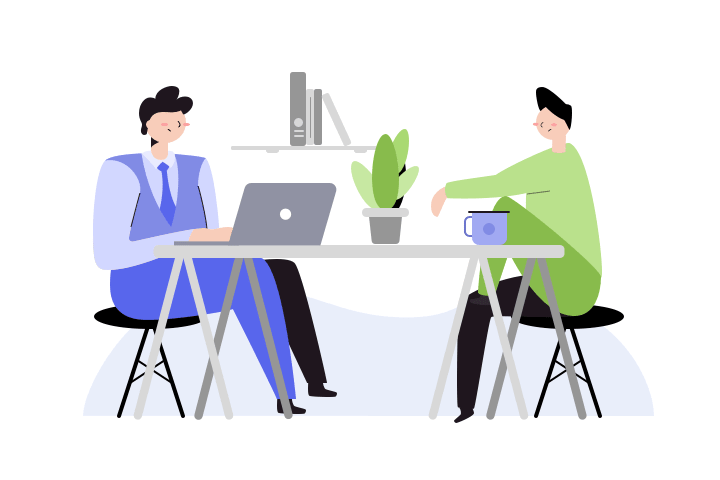
A Balance Sheet is an accounting report required by all companies registered at Companies House and is helpful for self-employed to see their financial health. By leveraging these tools, even small businesses can ensure their financial statements are accurate and up-to-date. This equation ensures that the resources owned by the business (assets) are funded either by debts (liabilities) or by the owner’s investment (equity). Also known as stockholder equity or owner’s equity, balance sheet for dummies this term describes the value of shareholder investments plus retained earnings. It’s a snapshot of a company’s financial health at a specific moment, not a full picture of growth. Some financial ratios need data and information from the balance sheet.
The balance sheet equation
This asset section is broken into current assets and non-current assets, and each of these categories is broken into more specific accounts. A brief review of Apple’s assets shows that their cash on hand decreased, yet their non-current assets increased. Explore our online finance and accounting courses, which can teach you the key financial concepts you need to understand business performance and potential.

Ask Any Financial Question
- While accountants and finance specialists are trained to read and understand these documents, many business professionals are not.
- It’s simple, straightforward, and clear, making it easy to quickly record your assets, equity, and liabilities for comparison.
- However, the company typically reinvests the money into the company.
- Our easy online enrollment form is free, and no special documentation is required.
- Publicly traded companies typically have large internal accounting teams, including a Controller and CFO, to prepare the financial statements.
Apple’s total liabilities increased, total equity decreased, and the combination of the two reconcile to the company’s total assets. The balance sheet includes information Certified Bookkeeper about a company’s assets and liabilities, and the shareholders’ equity that results. These things might include short-term assets, such as cash and accounts receivable, inventories, or long-term assets such as property, plant, and equipment (PP&E).

Why You Can Trust Finance Strategists
Alongside her accounting practice, Sandra is a Money and Life Coach for women in business. In this article, we’ll explain everything you need to know about a business’s balance sheet. If you’re selling goods at a profit and increasing your customer base, the value of your assets may be larger than your liabilities. The debt-to-equity ratio shows how much equity the company has relative to its liabilities. So after the first year, your personal balance sheet would show your vehicle’s value as $18,000.
How to Read a Cash Flow Statement
If a company’s assets are worth more than its liabilities, the result is positive net equity. If liabilities are larger than total net assets, then shareholders’ equity will be negative. A balance sheet is one of three main financial statements publicly traded companies are required to issue regularly. If you own a small business or simply want to analyze your personal financial condition, a balance sheet can help you tremendously.
- Our intuitive software automates the busywork with powerful tools and features designed to help you simplify your financial management and make informed business decisions.
- Access your interactive balance sheet, income statement, and cash flow statement templates today.
- For example, if your reporting period is Q1 (January 1 – March 31), your reporting date may be April 1 of the same year.
- Within each section, the assets and liabilities sections of the balance sheet are organized by how current the account is.
- The report is used by business owners, investors, creditors and shareholders.
- Its liabilities will also increase by $8,000, balancing the two sides of the accounting equation.
An income statement, on the other hand, reports revenues and expenses over a longer period. Balance sheets are used to determine if a company can meet its debt obligations, while income statements gauge profitability. A balance sheet is one of the most essential tools in your arsenal of financial reports. Generally speaking, balance sheets are instrumental in determining the overall financial position of the business. The balance sheet includes information about a company’s assets and liabilities. Depending on the company, this might include short-term assets, such as cash and accounts receivable, or long-term assets such as property, plant, and equipment (PP&E).
- Lita Epstein, who earned her MBA from Emory University’s Goizueta Business School, enjoys helping people develop good financial, investing, and tax planning skills.
- These ratios can yield insights into the operational efficiency of the company.
- This register serves as a comprehensive record, detailing all the information about each asset your business owns.
- The Directors Loan Account (DLA) tracks all financial transactions between a director and the company.
- The current portion of longer-term borrowing, such as the latest interest payment on a 10-year loan, is also recorded as a current liability.
Shareholder’s Equity
Shareholders’ equity is the portion of the business that is owned by the shareholders. It is important to understand that balance sheets only provide a snapshot of the financial position of a company at a specific point in time. Businesses should be wary of companies that have large discrepancies between their balance sheets and other financial statements. It may not provide a full snapshot of the financial health of a company without data from other financial statements.

Get in Touch With a Financial Advisor

Companies often sell products or services to customers on credit; these obligations are held in the current assets account until they are paid off by the clients. Assets are on the top of a balance sheet, and below them are the company’s liabilities, and below that is shareholders’ equity. A balance sheet is also always in balance, where the value of the assets equals the combined value of the liabilities and shareholders’ equity. On the current side, this can include things like payroll obligations, accrued benefits, and other items due within a year. On the noncurrent side, liabilities can include lease obligations, deferred tax credits, customer deposits, and pension obligations, to name just a few.
Although balance sheets are important, they do have their limitations, and business owners must be aware of them. The data and information included in a balance sheet can sometimes be manipulated by management in order to present a more favorable financial position for the company. This may include accounts payables, rent and utility payments, current debts or notes payables, current portion of long-term debt, and other accrued expenses. With a greater understanding of a balance sheet and how it is constructed, we can fixed assets review some techniques used to analyze the information contained within a balance sheet. However, the current and noncurrent assets categories also include “marketable securities” categories.
